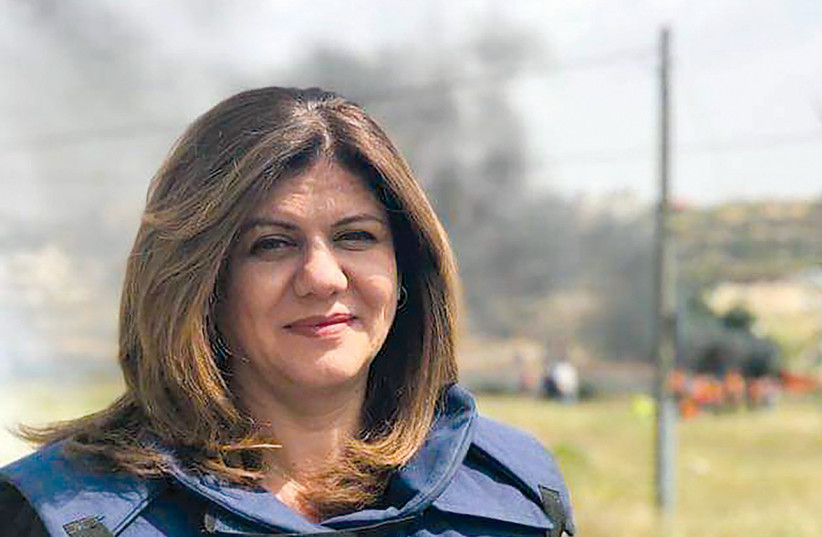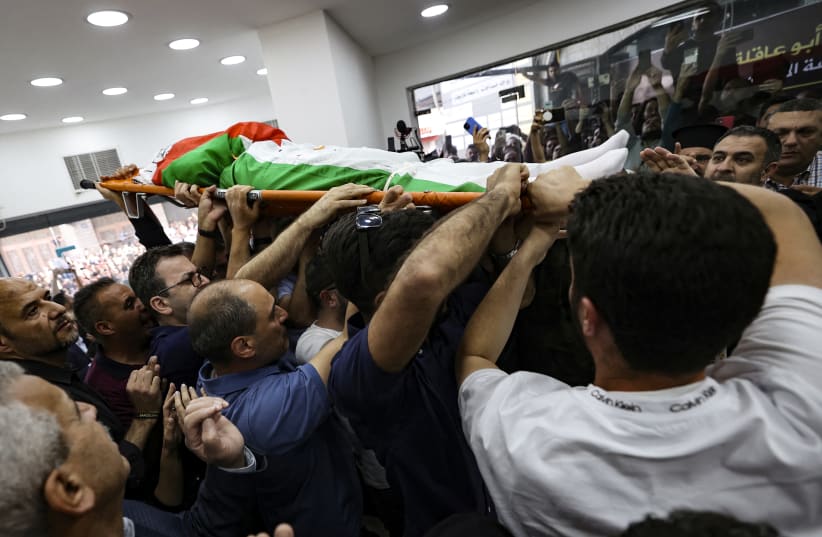The Israeli Defense Forces have added additional teams including those from elite intelligence units to help bolster its investigation into the death of Al Jazeera reporter Shireen Abu Akleh who was killed in Jenin in May.
According to Ynet News, The teams include special units from Military Intelligence Unit 9900 which is responsible for gathering visual intelligence including geographical data from satellites and aircraft, as well as mapping and interpreting visual intelligence (VISINT).
The teams will also include officers from Unit 9900 who specialize in mapping as well as other intelligence staff.
The IDF Spokesperson's Unit did not respond to the report.
“Urban areas are more complicated, it takes a lot of GEOINT, sensors, and the right technology to connect the dots to give the full picture.”
Lt.-Col. F
Death of Shireen Abu Akleh
Abu Akleh, who was wearing a press vest and helmet, was struck by a bullet to the head while covering an IDF raid that saw heavy clashes between forces and Palestinian gunmen in the West Bank city of Jenin in mid-May.


The military said that they entered Jenin in order to carry out arrests and were met by “widespread and uncontrolled gunfire” as well as accurate shots and improvised explosive devices hurled toward troops.
Abu Akleh was killed towards the end of the raid on the outskirts of Burqin near the West Bank city and injured another journalist Ali Sammoudi.
Mapping out the battlefield
The day after her death, soldiers reenacted the scene to create a 3D picture of the scene in an attempt to better understand where the soldiers and armed Palestinians were in order to analyze shooting angles.
The IDF hopes that the high-resolution satellite images and mapping teams will be able to bring about a clearer picture of the scene.
“Urban areas are more complicated, it takes a lot of GEOINT, sensors, and the right technology to connect the dots to give the full picture,” Lt.-Col. F, the commander of the unit told The Jerusalem Post in a recent interview.
F explained that troops use Artificial Intelligence to extract buildings from images in order to best understand the scale and make-up of the buildings and other structures in an area.
Israel blamed in recent reports
Israel has been blamed for her death by the Palestinian Authority and the UN High Commissioner for Human Rights as well as media outlets that have carried out investigative reports.
The IDF has not ruled out the possibility that she was shot by a Palestinian gunman or an IDF soldier, saying that the only way to determine who fired the bullet was to carry out a ballistic test to match the bullet with the gun.
Though the IDF has reportedly narrowed down the rifle which may have fired the bullet that hit Abu Akleh, the Palestinian side has refused to hand over the bullet that was taken from her body to Israel which they say deliberately targeted her.
Her death sparked international outrage against Israel and IDF forces but the IDF’s Military Advocate General Brig.-Gen. Yifat Tomer-Yerushalmi has said that opening a criminal investigation is warranted only when there is suspicion of a criminal offense but “during intense combat activity like in Jenin, the death of an individual in itself does not automatically raise such suspicion.”
On Friday a spokesperson for the office of the UN High Commissioner for Human Rights Ravina Shamdasani said that "it is deeply disturbing that Israeli authorities have not conducted a criminal investigation.”
"Where is the bullet?"
Following the UN report that accused Israel of firing the deadly bullet, the IDF released its own statement titled “where is the bullet?” in which it said that the “Palestinian Authority does, from time to time, conduct joint investigations with Israel,” and its refusal to share it “indicates what its true considerations are.”
Defense Minister Benny Gantz also called once again on the PA to hand over the bullet after hearing of the UN report.
"I once again call on the PA to deliver the bullet that hit Shireen to the State of Israel," he said. "That is what must be done in order to uncover the truth."
Expressing his condolences over her death, Gantz said that “her loved ones deserve to know the truth behind her tragic death. We may only uncover the truth by conducting a thorough ballistic, forensic investigation and not through unfounded investigations such as the one published by the UN High Commissioner for Human Rights."
Tovah Lazaroff contributed to this report.
